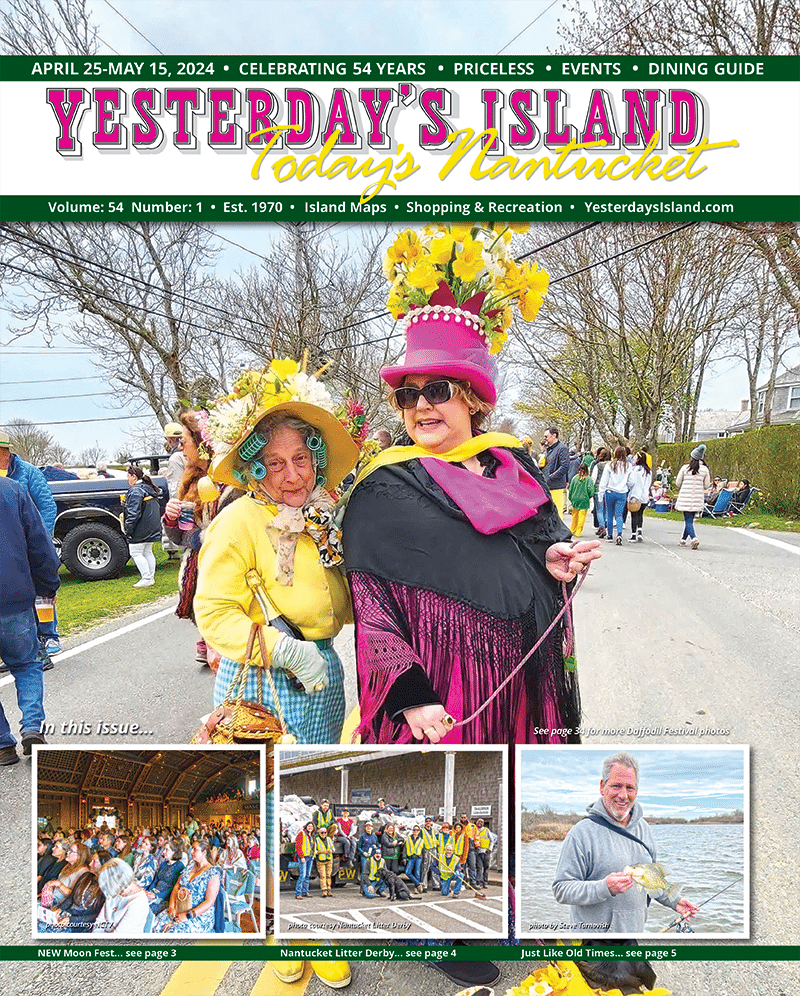~ by Amy Jenness, author of On This Day In Nantucket History ~
Isolated out to sea and staunchly Quaker, and therefore pacifist, Nantucketers nonetheless got pulled into British conflict long before the American Revolution. Island whaleships had to contend with European privateers capturing their ships as early as 1744. And in 1755, the British forced island residents to take in 34 French Canadians who had been exiled from Nova Scotia.
After decades of escalating tensions between Britain and France over Acadia, which at its largest consisted of Maine and today’s Maritime Provinces, a coalition of New England ships left Boston for Nova Scotia with soldiers and arms in early May of 1750. By June the men had captured Fort Beausejour. Five years later another New England coalition captured Fort Louisburg, and war between France and England looked inevitable.
Throughout the first half of the 1700s, the British and New Englanders backed by them, seized portions of Acadia from France; in part for control of their lucrative resources; in part due their opposition to Roman Catholicism; and in part to push the French away from the borders of New England colonies. When the British took over Nova Scotia in 1713, the treaty allowed ethnic French families to remain there and British officials asked the French Nova Scotians to sign an oath declaring their loyalty to the British crown. They refused, saying they preferred to remain neutral. But by 1755 the British felt the Acadians to be a threat as they prepared to enter a global war, with France as the main opponent. Again, the British government demanded the Acadians give their allegiance to Britain, and again they refused.
Not at all assured of the Acadians’ loyalty, the British government devised an extreme plan – deport and scatter the ancestral French throughout the American colonies and England. What began as the deportation of families around the Fortress of Louisburg, turned into the exile of 10,000 Acadian people by the end of the war. In the first deportation in 1755, the exiles were held under guard for almost a month and were close to starving to death by the time ships arrived.
Two thousand Acadians ultimately arrived in Massachusetts, the first group in November of 1755. Towns in the colony were ordered to take at least one family. Known as the “French Neutrals,” 34 displaced French Nova Scotians arrived on Nantucket in December of 1755. They formed five distinct families with the last name of either Dupee or Breau and ranged in age from 1 to 69 years old. They were destitute, Roman Catholic, spoke no English and completely dependent on islanders for their survival.
A year after the “French Neutrals” arrived, Nantucket voters held a town meeting and decided to petition the Massachusetts General Court to refund a portion of their Province Tax to offset the financial burden of taking in the Acadians. In his petition, Jonathan Coffin stated the cost to be a little more than 27 pounds for a seven month period. The court approved the tax abatement, as it did for many Massachusetts towns struggling with the same issue.
In 1763, Britain and France signed the Treaty of Paris and ended the Seven Years War. In Massachusetts many of the displaced Acadians petitioned the Massachusetts General Court for permission to leave. Some moved to France, some to Quebec, and some moved to Louisiana. Not many returned to Nova Scotia and fewer still chose to remain in Massachusetts.
The “French Neutrals” were given their own column on census records during their prominence in Massachusetts. The 1764 census reports 13 “French Neutrals” living in Nantucket County. By 1765 the government had stopped tracking them and those who remained began to assimilate to life in American colonies. Nantucketers and their ships were also impacted by the conflict between England and France.
With innovations in whale processing and a dwindling whale population nearby, Nantucket ships began travelling far from home around 1720. With ships stretched from the Arctic Circle to the Caribbean, Nantucket whaleships became a target of French and Spanish privateers. Privateers were government-sanctioned warships – but not attached to a navy – that had permission to disrupt commerce by taking enemy ships and crew. Before the American Revolution, French privateers, who were perpetually in conflict with the British over Canadian lands, and Spanish privateers, who patrolled Carribean waters, were the ones to watch for. Later, Nantucket ships would need to avoid British privateers during the American Revolution and the War of 1812 and southern American privateers during the Civil War.
Between 1744 and 1747 three Nantucket ships were taken by privateers. In 1746 Nantucket captain Zephaniah Pinkham and his crew of 12 Nantucket English men and Native Americans were released from a Canadian jail in exchange for piloting two French ships into Halifax harbor. They were given back their ship and told to return to Nantucket by way of the West Indies as a condition of their release.
When it declared war in 1755, the British government expected New England men to enlist, but excused Nantucket because of the island’s predominately Quaker population, which opposed war as part of their religion. Other Massachusetts towns were prohibited from launching boats or fishing the Atlantic Ocean, but Nantucket whaling, now a global economic powerhouse doing a brisk trade in whale oil products with England, was allowed to continue.
In 1756, six of the 80 whaling voyages that left Nantucket that year were raided and taken by privateers and they continued to harass Nantucket ships until the end of the war in 1763.
Twelve years later Nantucket would again feel the hardship of war during the American Revolution and the pattern would repeat during the War of 1812. But after each war Nantucketers doggedly rebuilt their fleets and returned to prowling seas all over the globe in search of whales until the last voyage returned to Nantucket in 1870.



